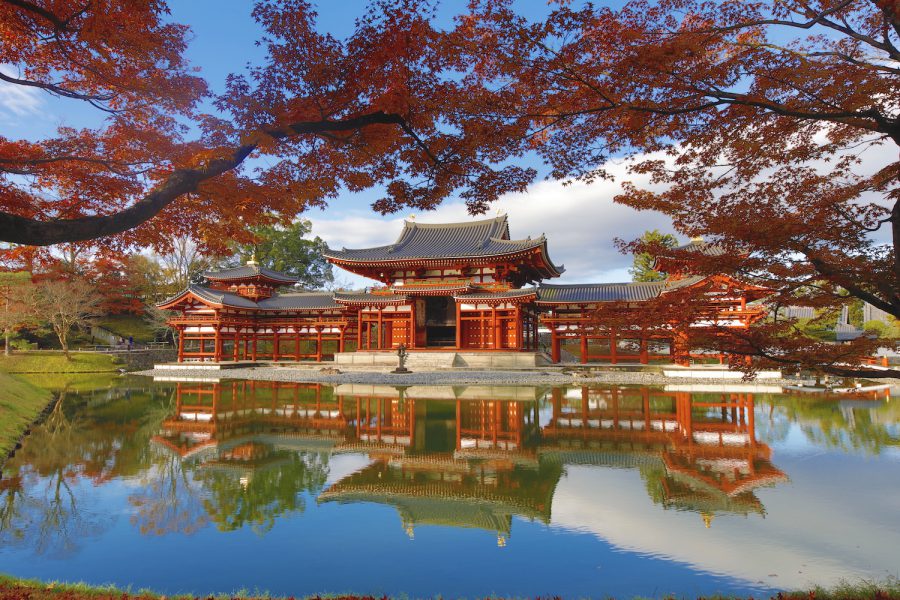Garden Knowing/
keywords
The Pure Land Garden
 Photo credit: Byodoin Temple
Photo credit: Byodoin TempleUNESCO World Heritage site Byodoin Temple has a Pure Land garden that has existed since the temple's founding in 1052, the year believed by Kyoto’s court nobility to inaugurate the end of the world.
The Pure Land Garden
Do garden landscapes directly reflect the zeitgeist in which they are created? Of all Japanese garden forms, the Pure Land garden may furnish those who would reply yes with their most powerful evidence. As the political supremacy of Kyoto’s court nobility began to wane in the tenth and eleventh centuries, it was perhaps inevitable that a garden style would emerge to express this ruling class’s gnawing anxiety about the future and urgent desire for salvation. In this context, it makes sense that disillusioned aristocrats, fully convinced that theirs was a degenerate age, would create Buddhist temples that remade the pond garden form into a vision of rebirth into a pure land.
Once employed by Kyoto’s court nobility as fundamental elements of their shinden-zukuri (“sleeping palace”) residences, the pond garden form now offered a model for depicting diagrammatic renderings (mandala) of the Buddhist Pure Land in three-dimensional form. Yet although the trend originated in Kyoto, it was only after migrating beyond the capital that the Pure Land garden succeeded in creating its most powerful visions of the Buddhist afterlife through integrated vistas that aligned the temple’s architecture and pond with a majestic mountain view in the background. The addition of this mountain landscape made topography selection a matter of central importance for Pure Land garden planning. This garden form migrated as far as northeast Japan and was early embraced by the rising warrior class at their new headquarters in Kamakura. It is almost as though the political and economic instability of the times elevated what began as the imperial capital’s signature residential garden into a nationwide prayer for redemption.
And yet perhaps even the Pure Land garden’s status as a sign of the times is not as self-evident as it may first appear. Students of this form identify earlier examples in temple lotus gardens dating back to the eighth century, when Nara was Japan’s capital, and have even traced this concept’s origins to seventh-century Korea! Pure Land gardens are thus captivating spectacles of the intimate marriage between sublime beauty and historical complexity that pervade the Japanese gardening tradition. Yet perhaps we might also identify a common thread between them in their equation of garden creation with the pursuit of karma. If so, it may be said that this is a very understandable (and likely universal) motivation not entirely unknown to garden landscaping today.
